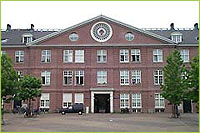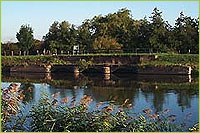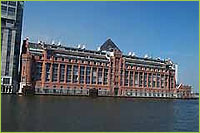| |
 |
|
The defense line of Amsterdam
The defense line of Amsterdam is a circular defense around the capital, covering a 135-kilometer circumference. The protection of the center of the country was ensured by a network of 45 forts and their artillery acting in concert with temporary flooding from polders and an intricate system of canals and locks. This was all done to defend the National Keep, the last line of defense of the Kingdom of the Netherlands. Not only is the Defense Line of Amsterdam one of the largest defense works and one of the last ones built, it is also the most extensive. In 1996, the Defense Line of Amsterdam was added to Unesco's World Heritage List.
The Defense Line of Amsterdam was built between 1883 and 1920 by the Ministry of War. It consists of flooded areas (inundations) and thirty six forts, two coastal forts, two fortresses, three batteries and two permanent and two temporarily coastal batteries, some of which were planned but never built. It is the only example of a militairy defense system based on water control. If necessary, the polders could be covered with 0.5 to 1.5 meters of water within 48 hours; too deep for infantry but too shallow for boats.
Many of the forts are still intact. Sometimes they are hidden in residential areas, some of them are easily accessible. Almost all of the forts and surroundings are considered official monuments. The green strip of inundation and defence circles is arranged as a recreation spot, with bicycle routes and nature areas. The open landscape is part of the Defence Line and is preserved as well as possible. One of the reasons the Defense Line is currently much appreciated as a monument, is not just because it is on the World Heritage List and is irreplaceable as a historic cultural monument, but because the natural value of the Defense Line is considerable. Located on the edge of, sometimes even in, urban areas, the Defense Line is an oasis of tranquility. Even though the Defense Line of Amsterdam has lost its military purpose, the historic, cultural and natural importance remains and makes it unique in the world!
©Nederlands Bureau voor Toerisme & Congressen 2004
|





